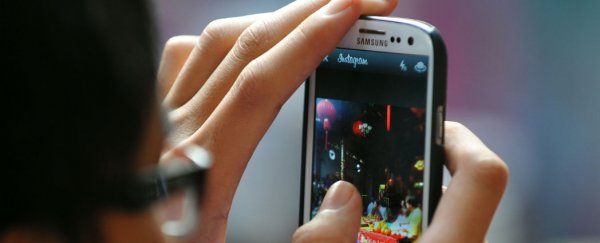The integration of smartphones and touchscreens with our everyday lives has occurred only recently, but right now, it's extensive. We sit on trains and buses and use them to pass the time between destinations, we lie in bed and scroll for hours before dozing off, we check our various social media channels while sitting on the couch watching TV.
We talk about how the repetitive nature of learning an instrument or a new language changes the shape and processing power of our brains, so what is smartphone use doing to them? We're scrolling, tapping, and swiping with our thumbs multiple times a day, in a way that humans never have before, so neuroscientists from the University of Zurich and ETH Zurich in Switzerland decided to figure out how it's affecting our brains.
"What this means for us neuroscientists is that the digital history we carry in our pockets has an enormous amount of information on how we use our fingertips (and more)," one of the team, Arko Ghosh, told Collins at Wired UK.
The team used electroencephalography (EEG) recordings to observe how the brains of regular smartphone users work, and then compared those to the brains of people who used older, touchscreen-less phones. They tracked 37 volunteers over 10 days - 27 of which used touchscreen phones, and 10 used old phones with actual buttons. The volunteers were asked to complete tests that focussed on how they used their thumbs, forefingers, and middle fingers.
Publishing in the journal Current Biology, the team discovered that in regular smartphone users, the brain activity was heightened whenever each of those three fingers made contact with something. "The level of activity in the cortex was also found to be directly proportional to the intensity of phone use, which was qualified by the battery logs," says Collins.
Interestingly, the tip of the thumb seemed to respond best to regular phone use - the researchers found that the shorter the time between extensive touchscreen use involving the thumb, the more intense the brain activity. In other words, the amount of activity going on in the cortex was found to be directly proportional to how much an individual used their smartphone's touchscreen.
"I was really surprised by the scale of the changes introduced by the use of smartphones," Ghosh said in a press release. "I was also struck by how much of the inter-individual variations in the fingertip-associated brain signals could be simply explained by evaluating the smartphone logs."
"What this means is that the repetitive movements made by our thumbs as they glide over touchscreens is reshaping the sensory processing from our hands, and this can been adjusted on demand when we are using our phones," Collins reports at Wired UK.
The researchers say this is evidence to suggest that our brains are being "continuously shaped" by the use of smartphone and touchscreen technology, which can have positive effects, like heightened sensitivity, but also some pretty sobering negative effects.
When you alter the shape of the cortex - particularily the somatosensory cortex, which controls the sensation of touch - it could lead to pain and movement disorders. "Plasticity of the somatosensory cortex is associated with the development of chronic pain," the team reports, adding that, "More research is still needed to unravel the consequences of the altered sensory processing linked to the use of touchscreen devices."
Sources: Wired UK, Gizmodo India
